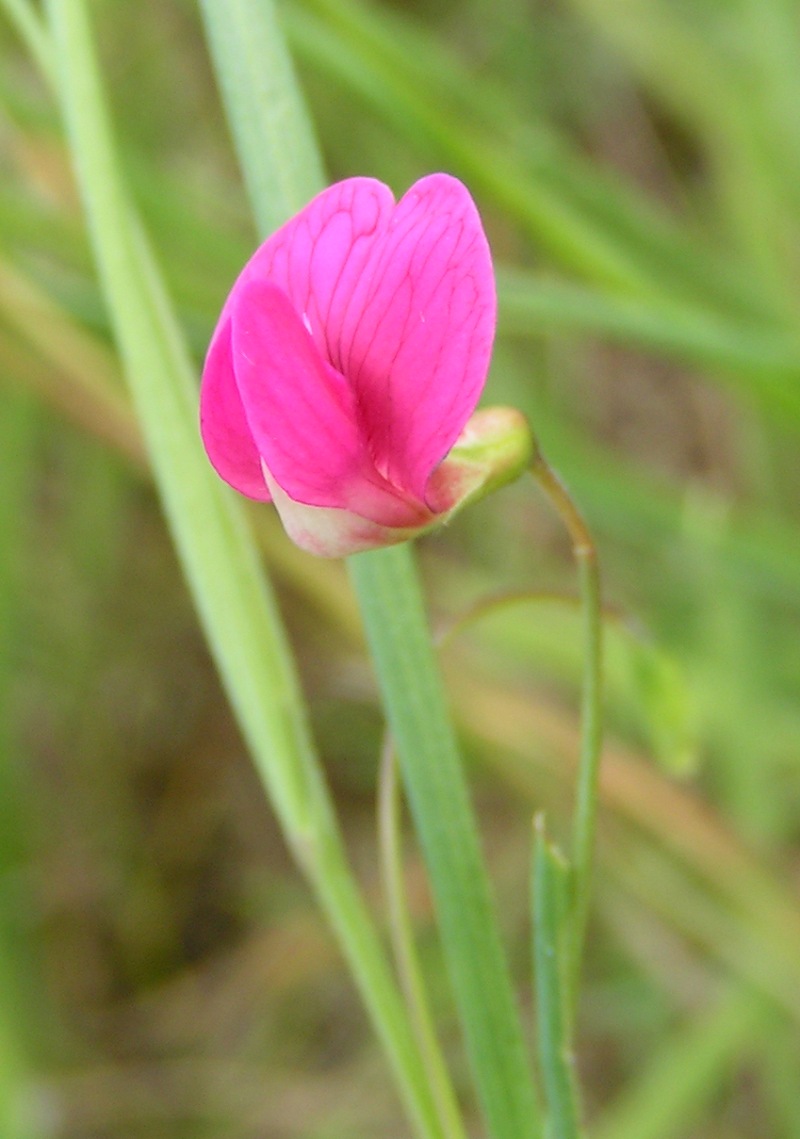- Lathyrus
Taxobox
name = Sweet peas

image_width = 250px
image_caption = Grass Vetchling, "Lathyrus nissolia"
regnum =Plant ae
divisio = Magnoliophyta
classis = Magnoliopsida
ordo =Fabales
familia =Fabaceae
subfamilia =Faboideae
tribus =Vicieae
genus = "Lathyrus"
genus_authority = L.
subdivision_ranks = Species
subdivision = See text.Thegenus "Lathyrus" consists of the sweet peas and vetchlings,flowering plant s in thelegume familyFabaceae . There are approximately 160 species of "Lathyrus"; they are native totemperate areas, with a breakdown of 52 species in Europe, 30 species in North America, 78 in Asia, 24 in tropical East Africa, and 24 in temperate South America. [cite journal |author=Asmussen, Conny B; Liston, Aaron| title= Chloroplast DNA Characters, Phylogeny, and Classification of Lathyrus (Fabaceae)| journal= American Journal of Botany| month=March | year=1998 | volume=85| issue=3| pages= 387| url=| doi= 10.2307/2446332] There are annual and perennial species which may be climbing or bushy. This genus has numerous sections, including "Orobus", which was once a separate genus. [cite book | author = Fred, Edwin Broun; Baldwin, Ira Lawrence; McCoy, Elizabeth | year = 1932 | title = Root Nodule Bacteria and Leguminous Plants | publisher = UW-Madison Libraries Parallel Press | location = | id = ISBN 1-893311-28-7 | pages =142]The genus includes the garden
sweet pea ("Lathyrus odoratus") and the perennialeverlasting pea ("Lathyrus latifolius").Flower s on these cultivated species may be rose, red, maroon, pink, white, yellow, purple or blue and some are bicolored; they are also fragrant, which makes them a very popular garden plant. Cultivated species are susceptible tofungal infections including downy and powderymildew . "Lathyrus" species are used as food plants by thelarva e of someLepidoptera species includingGrey Chi ,Latticed Heath (both recorded onMeadow Vetchling ) and "Chionodes braunella".Other species are grown for food, including "L. sativus" and "L. cicera", and less commonly "L. ochrus" and "L. clymenum". "L. tuberosus" is grown as a
root vegetable for its starchy edibletuber .The
seed s of some "Lathyrus" species contain a toxicamino acid and if eaten in large quantities can causelathyrism , a serious disease. [cite journal
author = Mark V. Barrow; Charles F. Simpson; Edward J. Miller
title = Lathyrism: A Review
year = 1974
journal = The Quarterly Review of Biology
volume = 49
issue = 2
pages = 101–128
url= http://links.jstor.org/sici?sici=0033-5770%28197406%2949%3A2%3C101%3ALAR%3E2.0.CO%3B2-%232
doi = 10.1086/408017 ]Selected species
* "
Lathyrus angulatus " (Angled Pea)
* "Lathyrus annuus " (Red Fodder Pea)
* "Lathyrus aureus " (Golden Pea)
* "Lathyrus biflorus " (Twoflower Pea)
* "Lathyrus chloranthus "
* "Lathyrus cicera " (Red Pea)
* "Lathyrus delnorticus " (Del Norte Pea)
* "Lathyrus hirsutus " (Hairy Vetchling)
* "Lathyrus japonicus " (Sea Pea)
* "Lathyrus jepsonii " (Delta Tule Pea)
* "Lathyrus lanszwertii " (Nevada Pea)
* "Lathyrus latifolius" (Everlasting Pea)
* "Lathyrus linifolius " (Bitter Vetch)
* "Lathyrus littoralis " (Silky Beach Pea)
* "Lathyrus nervosus " (Lord Anson's Blue Pea)
* "Lathyrus nissolia " (Grass Vetchling)
* "Lathyrus odoratus" (Sweet Pea)
* "Lathyrus palustris " (Marsh Pea)
* "Lathyrus polyphyllus " (Leafy Pea)
* "Lathyrus pratensis" (Meadow Vetchling)
* "Lathyrus sativus " (Indian Pea)
* "Lathyrus splendens " (Pride of California)
* "Lathyrus sulphureus " (Snub Pea)
* "Lathyrus sylvestris " (Flat Pea-vine)
* "Lathyrus tingitanus " (Tangier Pea)
* "Lathyrus torreyi " (Torrey's Peavine)
* "Lathyrus tuberosus " (Tuberous Pea)
* "Lathyrus vestitus " (Pacific Pea)Notes
Wikimedia Foundation. 2010.
